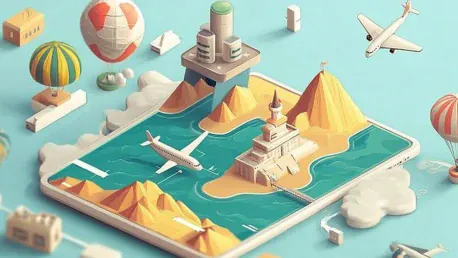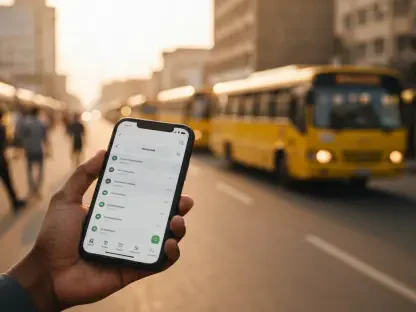In today’s rapidly evolving travel landscape, the rising demand for seamless travel planning and management experiences cannot be ignored. This trend has ignited the enthusiasm of travelers and tech enthusiasts alike to create travel apps that cater to convenience, personalization, and efficient trip management. Among the plethora of travel apps, Visit Dubai has emerged as a frontrunner, offering a comprehensive solution for travelers exploring Dubai. This success story has piqued curiosity about the financial commitment required to develop a travel app of this magnitude while ensuring high-quality features, robust security, and seamless user experience. Below, we take a deeper dive into the structured steps and cost implications involved in building a travel app like Visit Dubai.
1. Concept Development: A Thorough Ideation
At the heart of any successful travel app lies a well-defined concept that resonates with its target audience. This initial step involves intensive brainstorming to identify the unique selling points that will distinguish your app from competitors. By understanding the needs and preferences of travelers—whether they seek adventure, luxury, eco-friendliness, or cultural immersion—you can begin to shape the foundational elements of your app.
Your brainstorming sessions should also include a detailed competition analysis. Studying successful apps like Visit Dubai helps uncover gaps and areas for innovation. Perhaps Visit Dubai excels in offering real-time event updates, but there could be room for a feature that provides augmented reality (AR) guided tours or personalized eco-friendly travel suggestions. This kind of analysis provides the groundwork for creating a travel app that stands out.
In addition to competition analysis, it’s crucial to sketch a basic blueprint of your app’s core features. Will it offer multilingual support? How about integrating AI-driven personalized itineraries or AR-enhanced experiences? The ideation phase is all about leveraging emerging technologies in a way that’s practical and appealing for your user base. Note that each of these features will have implications for development costs, so it’s essential to establish a realistic and prioritized feature list at this stage.
2. Strategy Mapping: Project Planning
Once you’ve nailed down your concept, it’s time to map out a strategic plan that outlines the project’s scope, timeline, and financial requirements. Clear planning is essential to avoid unforeseen expenses and ensure timely execution. At this stage, you’ll need to make decisions about the platforms you will support—iOS, Android, or both. Cross-platform development can save costs, but it demands careful consideration regarding performance and user experience.
Project planning also involves assembling your development team. Will you go in-house or outsource to a firm with specific experience in travel apps? The choice significantly impacts your budget and timeline. With a dedicated development team, you can streamline communication and ensure a cohesive development process. Using project management tools like Trello, Asana, or Jira can help keep the team on track by clarifying roles, responsibilities, and deadlines.
Having a robust financial plan in place is crucial at this stage. This budget should break down the anticipated costs for each project phase—from market research and design to development and testing. Details should cover everything, including third-party services, licensing fees, and marketing expenses. Planning meticulously at this point ensures smoother execution and minimizes the risk of budget overruns.
3. Designing the User Journey: UI/UX Design
User interface (UI) and user experience (UX) design are the first tangible aspects your users interact with, making them critical for your app’s success. A well-designed travel app not only looks good but is also straightforward to navigate, providing a seamless user journey from the moment they open the app. This phase involves creating wireframes and prototypes that map out the app’s interface and key functionalities.
An efficient UI/UX design also means considering the diverse needs of your potential users. For instance, travelers may look for features like offline maps, currency converters, or quick access to emergency services. Integrating these user needs into the design not only enhances the app’s functionality but also improves its overall appeal. Designs should be tested with real users to collect feedback for iterative improvements—a crucial step in refining the user experience.
In terms of costs, the complexity of your design significantly impacts the budget. Basic designs will be cost-effective, but custom graphics, animations, and interactive elements will drive up expenses. Employing experienced designers who can balance aesthetic appeal with usability is crucial. Their expertise will ensure that your app doesn’t just look good but also functions flawlessly, offering the best possible user experience.
4. Coding the App: Development Phase
Development is where your ideas start transforming into a functional product. Choosing the right tech stack is crucial. Options like React Native for cross-platform apps or Swift and Kotlin for native apps are popular and will influence both the development time and cost. The complexity of features—ranging from basic booking functionalities to advanced AI-driven recommendations—also plays a significant role in this phase.
Developers need to build both the front-end, which users interact with, and the back-end, where data processing and storage take place. The back-end infrastructure must be robust enough to handle real-time updates, transactions, and integrations with third-party services like payment gateways or booking APIs. Ensuring scalability and security at this stage is paramount to accommodate growing user demands in the future.
Also crucial is the integration of exciting features like AI for personalized experiences or augmented reality (AR) to enhance travel guides. Each added advanced technology not only advances the app’s functionality but also raises the project’s overall cost. Developers must work closely with designers in an iterative process to merge functionality with usability, ensuring a cohesive and high-quality user experience.
5. Verifying Functionality: Quality Assurance
Once the app has been developed, rigorous quality assurance (QA) testing is essential. This stage ensures that the app is not only functional but also user-friendly and secure. Different types of testing—functional, performance, security, and user acceptance testing (UAT)—are carried out to identify and fix bugs or issues. It is vital to test the app across various devices and operating systems to ensure compatibility and optimal performance.
QA testing isn’t just about finding bugs and issues; it’s also about usability. Ensuring that all features work intuitively and the app offers a satisfying user experience is crucial. A poorly functioning app can tarnish your brand’s reputation even before it gets off the ground, making QA an integral part of the development process. Automating some of these tests can help speed up the process and make it more efficient.
Lastly, remember that QA is an ongoing process. Even after launching the app, regular updates and testing are necessary to maintain and improve functionality. QA might seem like a cost-heavy phase, but investing here saves money in the long run by preventing costly post-launch patches and fixes. Consistent QA efforts ensure the app remains reliable and keeps users coming back.
6. Deployment: Launch the App
After rigorous testing and necessary iterations, it’s time to deploy your travel app. Launching the app involves submitting it to app stores like Google Play and Apple App Store. This process requires meeting specific guidelines and obtaining the necessary approvals, which can take time depending on the platform. Preparing a robust launch strategy is crucial to ensure a successful rollout.
During the launch, preliminary marketing efforts must come into play. These include ASO (App Store Optimization) to improve the app’s visibility, social media campaigns, and perhaps collaborations with travel influencers. A good marketing strategy helps create buzz and attracts early adopters, providing valuable user feedback that can be used for further improvements.
Upon successful launch, monitor user feedback and app performance closely. Immediate issues need to be addressed promptly to maintain user trust. Deployment also encompasses rolling out updates based on user input, adding new features, and fixing bugs. This post-launch phase is crucial for establishing a solid reputation and gaining a loyal user base, ensuring the app’s continuous growth and improvement.
7. Maintaining and Upgrading: Regular Updates
In today’s rapidly evolving travel landscape, the increasing demand for smooth travel planning and effective management experiences can’t be overlooked. This growing trend has sparked a wave of excitement among travelers and tech enthusiasts striving to develop travel apps that emphasize convenience, personalization, and efficient trip management. Amidst the myriad of travel apps available, Visit Dubai stands out as a leading player, delivering a comprehensive solution for individuals exploring Dubai. The success of this app has prompted widespread curiosity regarding the financial investment necessary to create such a sophisticated travel tool, ensuring it possesses high-quality features, robust security, and a seamless user experience.
Delving deeper, one can appreciate the structured steps and the associated costs involved in creating a travel app similar to Visit Dubai. The development process involves thorough planning, design, coding, testing, and deployment. Key considerations include integrating personalized recommendations, real-time updates, and secure payment gateways. Additionally, ensuring the app’s adaptability across various devices and operating systems adds to development complexity. Factors such as hiring skilled developers, investing in advanced technologies, and maintaining ongoing support significantly impact the financial commitment. Understanding these elements is crucial for anyone looking to embark on building a successful travel app in today’s competitive market.









